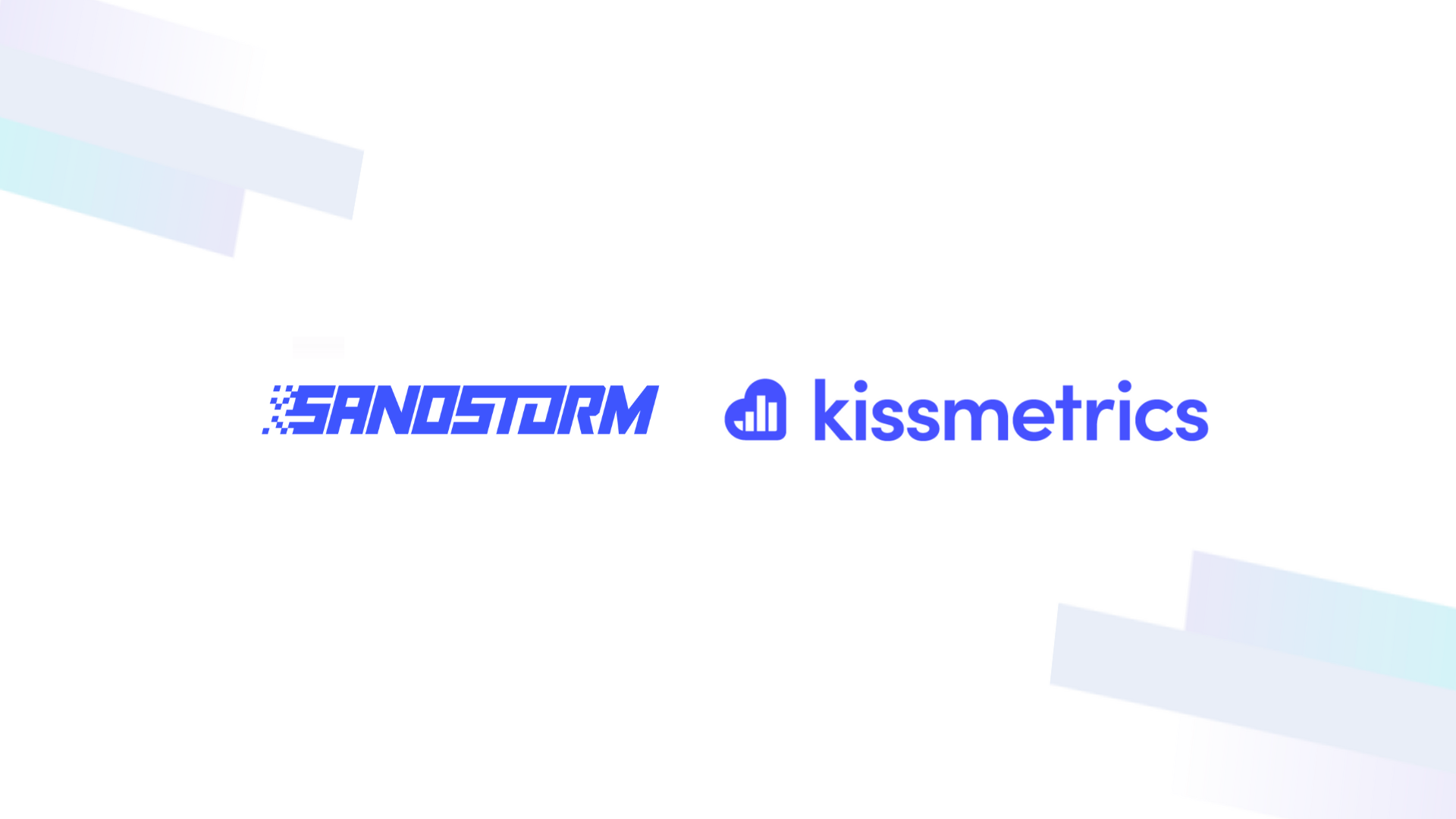The Importance of Understanding Qualitative Data
 Qualitative data is a non-numeric measure of data best used for describing characteristics or qualities. Qualitative data is most frequently obtained from surveys, feedback forms, focus groups, or other forms of personal feedback. This data can also be recorded from a third-person perspective, such as recording someone’s reaction to a new product.
Qualitative data is a non-numeric measure of data best used for describing characteristics or qualities. Qualitative data is most frequently obtained from surveys, feedback forms, focus groups, or other forms of personal feedback. This data can also be recorded from a third-person perspective, such as recording someone’s reaction to a new product.
Qualitative data is important for ecommerce and SaaS because it’s a way to measure customer feedback and product reviews. Kissmetrics can help you organize your data collection and break down your data types.
What Is the Difference Between Qualitative and Quantitative Data?
Quantitative data is a numeric measure of data. A good example of quantitative data would be the number of sales recorded over a specific period of time, the number of new customers over a period of time, or the churn rate. This type of data is objective, meaning it is not based on opinion and is a fact that can be measured in quantity.
The main difference between qualitative and quantitative data is that qualitative data is non-numeric.
Both types of data are important when measuring the performance of your company or a specific product. For example, solid quantitative data is important for measuring financial data or sales data, which are good indications of company growth.
On the other hand, measuring qualitative data such as product feedback or customer satisfaction is needed to make sure your products are successful in your customer’s eyes.
How Can I Collect Qualitative Data?
Collecting qualitative data can be more of a challenge than collecting quantitative data, but qualitative data is essential for businesses hoping to gather customer feedback. If you’re struggling to collect qualitative data, Kissmetrics has the experience to help you. Some of the different options for collecting qualitative data include:
- One-on-one interviews
- Focus groups
- Observation
- Longitudinal studies
- Case studies
One-on-One Interviews
Conducting personal one-on-one interviews is a proven way to get good qualitative data. Interviewing a current or potential customer can provide honest feedback about your products or company’s perception.
While one-on-one interviews may seem more time-consuming, virtual interviews are common and much easier to arrange than in-person interviews. It’s good to have a mix of your typical users interviewed for feedback on your product performance in order to gain information about a variety of demographic groups.
It may also be helpful to interview potential customers to understand their current product choices and why your product hasn’t been used. If possible, one-on-one interviews with former users can provide valuable feedback on why your product did not work for that user.
The qualitative data from interviews is important to get a view of the perception individuals have of your products.
Focus Groups
Focus groups have been used in several different fields to collect qualitative data from small groups of people. For marketing purposes, focus groups will be guided by a proctor who asks questions about companies and products in your field of interest. This format promotes free and open discussion about topics concerning your company and products.
Focus groups can be used in the early phases of product development when companies are trying to get feedback on a new product or concept. You can also use focus groups to test product usability. Having a focus group test a website’s usability can get valuable qualitative data feedback for your developers.
Observation
Observing your customers as they use your products is another way to get qualitative data. This method requires the observer to collect data and record interactions between the user and the product. Observing users without any dialog provides a realistic view of what users struggle to accomplish when using your product.
Some companies will go so far as to not give the customer any instructions and simply set the product in front of them to see what they do. Do they read the instructions insert? Do they navigate to the “Help” section? Do they immediately start using the product? This helps companies see how new users react to a product the first time they encounter it.
Your products must be simple and intuitive for new customers unfamiliar with their layout. Observing where the user’s eyes go and how they handle confusing situations can help designers create friendlier layouts. Qualitative data from observation can transform your products into well-thought-out solutions.
Longitudinal Studies
Another way of observing user behavior on a larger scale is a longitudinal study. Often, longitudinal studies involve following the same people or users over an extended period of time to track their behavior.
These types of studies are often used in the medical field to track the long-term success of medication or surgeries. For tech companies, a long-term study of their users and their habits can help organizations to understand the impacts their products have on users.
Longitudinal studies can reveal the habits of users, which could help developers shape new features. By knowing the patterns users tend to follow, developers are able to create software that is designed with these habits in mind. If you’re looking to understand what frustrates users, longitudinal studies can also be insightful. Perhaps a situation users didn’t put much thought into at first glance can become a real headache after long periods of use.
Longitudinal studies may require the most effort but can yield beneficial results.
Case Studies
When looking to do a deep dive on a particular topic or situation, a case study may be the best option. Case studies for websites may be a detailed look at an issue that doesn’t have an immediately obvious solution.
It may involve observing a small group or a large segment of your user base, but it’s best to have the scope of the issue narrow. A case study on why new customers aren’t using a particular feature may help understand how you can improve the product.
At the end of a case study, you may only have a theory or hypothesis because case studies do not always lead to a concrete solution, but your team is likely to be headed in the right direction.
Case studies can also provide a good platform for advertising your product. By showing potential users a real-world problem and how your product solved it, users can see the firsthand value of your product.
The qualitative data gathered from case studies can provide a detailed look at a specific situation you need to be analyzed.
How Can I Analyze My Qualitative Data?
Once you’ve collected your qualitative data, it needs to be properly analyzed in order to be usable. Two ways you can analyze your data are deductive analysis and inductive analysis.
Deductive Analysis
When performing deductive analysis, you start with a theory and try to prove it. An example could be “new users are having trouble completing a setup wizard.” From that theory, you would form a hypothesis about why the problem is occurring, such as “the final questions on the wizard are confusing to new users.”
From that hypothesis, you could then collect data around the issue that your users are experiencing. The first step would be to gather feedback from new users completing the setup process. Once you have the data relevant to the hypothesis, you can then analyze and evaluate the results in order to improve your product.
Perhaps you find that new users don’t understand the wording of the final questions in your setup process. Based on this information, you could reword your final questions to make them clearer
While deductive analysis can be helpful, you must start with a theory in order to use this method. If you don’t have a theory, then Inductive analysis is the proper way to analyze your data.
Inductive Analysis
When you have little to no idea regarding an issue you want to analyze, using inductive analysis is more practical. Inductive analysis is the process by which you would form a theory regarding a situation.
The first step is to start with an observation such as “a new user did not complete our setup process.” From this observation, you could look for patterns. For example, you might observe that half of the users in that focus group did not complete the setup process, which would indicate a pattern. After a pattern is established, you can then form a theory like “the users did not understand the questions in the setup process.”
This form of analysis is limited because you can form theories, but you need more data to prove or disprove that theory. After using inductive analysis to form your theory, you could then begin to solve the issue using deductive analysis.
Why Is It Important to Understand Qualitative Research?
When dealing with issues in your business, a numerically based report cannot always tell you the root issues in your products. The voice of your customers will be represented in qualitative data, so it’s important to understand what is being said.
Researching issues is a process that takes time, so understanding the best route for your business is key to being efficient. Kissmetrics can make it easy for you to collect and understand your qualitative research.
How Can Qualitative Research Help My Business?
Qualitative research is needed to track and resolve real issues your customers may face when using your product. Customer issues need to be tracked and analyzed, and that data is often collected through qualitative research.
It’s also important to research how to grow your product and reach out to new customers. Gathering feedback from people not using your product will help you see ways to expand your footprint in the market. Researching the voice of users and non-users is a great way to get their perception of your products.
Conclusion
Understanding qualitative data is necessary for companies looking to see what their customers think of their products. This non-numeric form of data goes beyond sales numbers and conversion rates to look at what customers say and feel about your products. Make sure it’s something you take the time to collect and analyze to improve your product delivery.
Sources:


